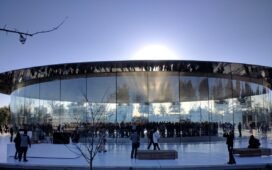The GFX 100 II now goes down to ISO 80 instead of 100 to further boost dynamic range. All of that allows photographers to get creative with RAW photos, or tease detail out of highlights and shadows.
It’s not bad at high ISOs either, thanks to the sensor’s backside illumination and dual-gain design. There’s very little noise visible at ISO 6400, and photos are usable up to ISO 12800 if exposure is correct.
The medium format sensor offers incredibly shallow depth of field if you need that for portrait shooting. Combined with a fast lens like the 80 mm f/1.7, it allows for incredible bokeh and subject separation.
For those who prefer to use JPEGs straight out of the camera, it delivers color-accurate images with the perfect amount of in-camera sharpening. That’s ideal for previews or for folks who want to use Fujifilm’s impressive film simulation modes. For the GFX 100 II, Fujifilm introduced a new one called Reala Ace that’s based directly on one of its old negative films. With a punchy, saturated and slightly nostalgic feel, it has become one of my new favorites.
There is one quality issue — the GFX 100 II drops from 16- to effectively less than 14-bits when shooting 8fps bursts in order to reduce throughput. That in itself isn’t a huge problem, but Fujifilm has been cagey about how it markets this, which has rubbed a lot of pro photographers the wrong way.
Video
I’m starting to sound like a broken record, but the X100 II is also Fuji’s best medium format camera for video. It has a host of new modes, most notably 8K. It also offers 6K, 4K/60p and 1080p at 240fps. All those formats can be captured in 12-bit ProRes, along with 10-bit H.265 formats. You also get access to Fujifilm’s excellent F-Log2 capture that boosts dynamic range.
There are some considerable compromises, though. 8K is captured with a 1.53 times crop, reducing the effective sensor size to less than full frame — which negates one of the main medium-format advantages: shallow depth of field. Other resolutions use the full sensor width, but pixel binning reduces sharpness.
Rolling shutter is also an issue at 8K, so be sure not to move the camera much at that resolution. It’s less bothersome at 4K resolutions, likely due to the pixel binning.
All that aside, video from the GFX100 II has a different quality than I’ve seen from most mirrorless cameras. The larger sensor makes it cinematic, especially with some of Fujifilm’s prime lenses. And the 8K video is extremely sharp when downsampled to 4K in DaVinci Resolve.
Realistically though, video is more of a nice-to-have feature for occasional use, as the majority of buyers will certainly be using it for photography.
Wrap-up
The $7,500 GFX100 II is an impressive medium format camera with improvements in every area compared to the previous model. More importantly, what did my pro photographer friends think and will they buy one? “What’s most noticeable is the evolution of the autofocus compared to the GFX100,” said Nathanael Charpentier. “In our studio we usually work with Sony, and the GFX100 II autofocus is still far from Sony’s level, but it’s a big improvement.
“It’s not a sports camera, it doesn’t have super-fast burst speeds. It’s more for studio portrait work. For certain types of ‘reportage’ like candid wedding shoots, if we really need the extra dynamic range offered by a medium-format camera, I could see using it.” At this point, they’re not planning on buying one due to the high price (and the fact that they just laid down 6,000 euros for an A9 III), but it’s high on their list of future equipment purchases.
Its main competitor is the $8,200 Hasselblad X2D 100C, which has perhaps slightly better color science and image quality — while also bringing a certain prestige with the Hasselblad name. However, the GFX100 II is superior in most other ways, including speeds, autofocus and video. If you really need to nail autofocus in busy or difficult situations, though, full-frame is still best: Sony’s 45-megapixel $6,500 A1 or Nikon’s $3,800 Z8 or $5,500 Z9 (both 45MP as well) are better choices.
This article contains affiliate links; if you click such a link and make a purchase, we may earn a commission.















